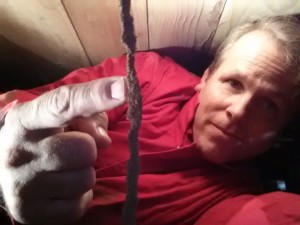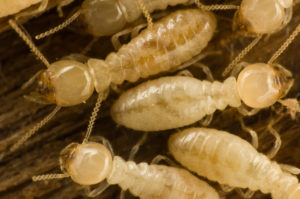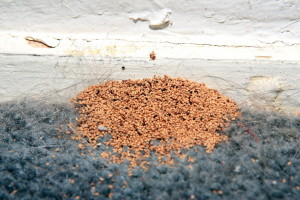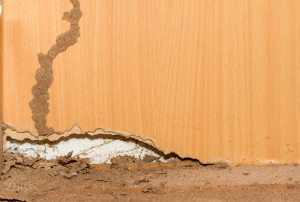 Termite control is something that no home or business owner wants to have to deal with. It’s quite common for people to be unaware that they have a termite problem until the termites have already caused a significant amount of damage. Each year, termites invade millions of homes, causing billions of dollars in damage that’s not covered by homeowners insurance. While they’re found in every state except Alaska, termites are a significant threat in San Diego County. It’s not a matter of if your home will encounter termites but when, making termite control a necessity.
Termite control is something that no home or business owner wants to have to deal with. It’s quite common for people to be unaware that they have a termite problem until the termites have already caused a significant amount of damage. Each year, termites invade millions of homes, causing billions of dollars in damage that’s not covered by homeowners insurance. While they’re found in every state except Alaska, termites are a significant threat in San Diego County. It’s not a matter of if your home will encounter termites but when, making termite control a necessity.
WHAT THEY DO
The most important thing for a homeowner to know about termites is that annually, they cause more damage to structures than fires, earthquakes and hurricanes combined. Their sole purpose in life is to consume cellulose, a chief component of lumber. They will readily eat anything with cellulose, from cardboard to newspapers. It is not uncommon to find termites eating cardboard and paper products stored in attics and basements. A thorough inspection and home evaluation by a licensed termite professional is the first step in protecting your investment from these voracious pests. With proper termite control methods, we can make your home healthier while saving your valuable documents and collectibles!
HISTORY
Termites are located all over the world and are prevalent throughout San Diego County. These irritating little pests are specifically known to thrive in tropical and sub tropical climates. It’s important to note that, although they can cause large amounts of damage to homes and buildings, they are generally not harmful to humans.
IDENTIFYING TERMITES
 While most people can easily recognize ants, spiders, and many other types of insects, few actually know what a termite looks like. As termite infestations are a big threat, it’s important to look for signs of damage they may be causing. Oftentimes you can see piles of droppings under the wood they slowly consume. Although they do resemble ants, they are not related to them. Termites belong to their own species known as the Isoptera. However, they live in colonies like ants, and termites are dependent upon other colony members for survival.
While most people can easily recognize ants, spiders, and many other types of insects, few actually know what a termite looks like. As termite infestations are a big threat, it’s important to look for signs of damage they may be causing. Oftentimes you can see piles of droppings under the wood they slowly consume. Although they do resemble ants, they are not related to them. Termites belong to their own species known as the Isoptera. However, they live in colonies like ants, and termites are dependent upon other colony members for survival.
COMMON TERMITES IN SOUTHERN CALIFORNIA
Drywood Termites
It’s common to have termites for a while before you ever see them. But when you do see them, they are usually dark to reddish brown winged termites from the reproductive caste. Their wings extend longer than their bodies by about 1/8 to 1/4 inches.

- Discarded wings of swarming drywood termites may be found in windowsills, in and around light fixtures, in the attic, or in similar places where swarmers can exit a colony.
- Little piles of pellets, called frass, can also be found in these areas.
- Damaged wood that is severely blistered or sounds hollow when tapped.
- Bowing floor joists.
- Pin-sized holes in walls and woodwork where termites “kick out” frass.
- Live, swarming (flying) termites in your home.
Drywood termite colonies range in number from a few dozen to up to 3,000. Drywood termites love to infest dry wood and are commonly found in the wood framing of attics. Winged reproductive drywood termites usually emerge from an existing colony to scout for new locations. Once they discover a new location, they’ll pair up and bore into wood, sealing up their entry. They can remain undiscovered for around two years, easily numbering into the thousands by the time you see evidence.
Subterranean Termites
While not the most common species in Southern California the subterranean termite (Reticulitermes hesperus) destroy homes at a rate of almost 80 times that of the drywood termites. As the name implies, they generally enter homes from below. Subterranean termite colonies are much larger and better organized, which enables them to affect much greater damage in less time. These termites thrive with a more stratified caste system. The majority of subterranean termites are actually members of a “worker caste,” and their sole job is to eat away at your home 24 hours a day.

- Swarmers flying early in the spring.
- Wings broken off near windows.
- Mud tubes or termite tunnels.
- Wood damage.
Subterranean termites excel at causing damage. In fact, they are more destructive to structures in the United States than any other insect. They live in huge colonies of 20,000 or more. A large queen can easily produce from 5,000 to 10,000 or more termites in a year. Subterranean termites love to eat the wood in homes and can make short work of properties with lots of wood in the structure.
CALL YOUR TERMITE CONTROL EXPERTS TODAY!
The best way to truly understand the depth of a termite problem, is to call a termite control expert. Nixtermite provides free home inspections.* Call today for your termite evaluation at (619)472-6666, or toll free at (844) BUG-HELP, and give yourself relief from your pest problems today! We’re proud to provide termite control solutions for folks throughout San Diego and San Diego County.
*There is a nominal fee for escrow reports.


